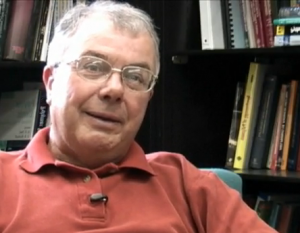The United States imports approximately one million barrels of oil per day from Canada, about twice the amount from Saudi Arabia. Much of that oil (bitumen) comes from Alberta tar sands. Unfortunately, it requires extensive water and energy to extract and separate the oil from the surrounding clay, sand, and water. A video in the upper right shows a new technique developed at Penn State that makes the process much cleaner and far less expensive. A Penn State press release explains how Paul Painter, professor of polymer science, and his group have developed a technique that uses ionic liquids (salt in a liquid state) to facilitate separation at room temperature without waste process water. Not only is much less water used (merely to wash the remaining sand), but because nothing needs to be heated, there are also substantial energy savings.

"Essentially, all of the bitumen is recovered in a very clean form, without any contamination from the ionic liquids," Painter explained. Because the bitumen, solvents and sand/clay mixture separate into three distinct phases, each can be removed separately and the solvent can be reused.
If you like to see a slightly more skeptical interview of Paul Painter click here. The current method of separating bitumen involves adding heated water, then agitating. Unfortunately, it requires lots of water, normally diverted from nearby rivers. Then, once the separation process is complete, the now-polluted water is pumped into open air tailings ponds, where it can potentially leach its way back into the water table.
Instead of heated water, the Penn State method uses room temperature ionic liquids (ILs), which consist of salt in a liquid state - a solvent such as toluene may also be added. When the ILs are introduced to a sand/bitumen mixture and stirred, in a matter of minutes it settles into three distinct layers: a bottom layer of oil-free sand, a middle layer of ILs, and a top layer of bitumen. The bitumen is then be removed and refined; the ILs are reused; and any residual ILs in the sand can be removed using a small amount of water so that the clean sand can be returned to the environment. The process can also be used to extract oil and tar from beach sand after oil spills. Unlike other remediation methods, the Penn State process completely removes any hydrocarbons, and then the clean sand can be returned back to the beach--whiter than the remaining beach sand.

In an experiment using sand polluted by the BP oil spill, the team was able to separate hydrocarbons from the sand within seconds. A small amount of water was used to clean the remaining ionic liquids from the sand.
In the video Aron Lupinsky, a researcher in Painter's group, said, "It was so clean you could toss it back on the beach. Plus, the only extra energy you need is enough to stir the mixture."



Comments
Thanks for sharing - what a nice application of ionic liquid. I wonder how this process can be scaled up. I could imagine that the mixture of the hydrocarbon and ionic liquid can be easily separated by further processing?
Typed a bit too fast -what I meant was - Will be curious to see how this process can be scaled up.
They've moved a couple steps on that, but nothing outside the lab. According to an interview with the Canadian business press, Paul Painter said that the oil companies haven't shown any interest. As water becomes more scarce, that could change. But no matter what, oil spill remediation seems like a no-brainer.